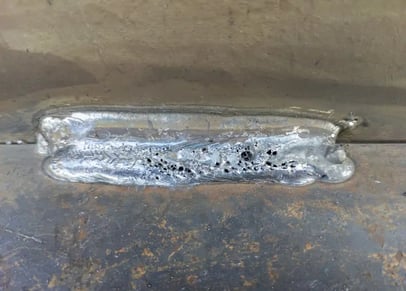Recognizing Porosity in Welding: Checking Out Causes, Impacts, and Avoidance Techniques
As specialists in the welding sector are well mindful, understanding the reasons, effects, and avoidance techniques associated to porosity is essential for accomplishing durable and dependable welds. By delving into the origin causes of porosity, analyzing its harmful results on weld quality, and checking out reliable avoidance methods, welders can enhance their expertise and skills to generate high-quality welds consistently.
Usual Sources Of Porosity
Porosity in welding is largely triggered by a combination of factors such as contamination, incorrect securing, and insufficient gas protection throughout the welding procedure. Contamination, in the kind of dirt, oil, or corrosion on the welding surface area, develops gas pockets when warmed, leading to porosity in the weld. Inappropriate protecting occurs when the securing gas, frequently used in processes like MIG and TIG welding, is not able to fully shield the molten weld swimming pool from responding with the bordering air, resulting in gas entrapment and subsequent porosity. Additionally, inadequate gas insurance coverage, frequently due to wrong circulation prices or nozzle positioning, can leave parts of the weld unsafe, permitting porosity to form. These elements jointly add to the development of gaps within the weld, compromising its honesty and potentially triggering architectural problems. Understanding and attending to these usual reasons are critical action in avoiding porosity and making certain the high quality and toughness of bonded joints.
Impacts on Weld Top Quality
The presence of porosity in a weld can considerably compromise the overall top quality and stability of the bonded joint. Porosity within a weld creates gaps or dental caries that weaken the framework, making it more vulnerable to cracking, rust, and mechanical failure. These gaps work as anxiety concentrators, lowering the load-bearing capability of the weld and raising the probability of premature failing under used tension. Additionally, porosity can likewise serve as prospective websites for hydrogen entrapment, further exacerbating the deterioration of the weld's mechanical homes.
In addition, porosity can hinder the efficiency of non-destructive testing (NDT) methods, making it challenging to detect other defects or discontinuities within the weld. This can result in significant security worries, specifically in crucial applications where the structural integrity of the bonded parts is critical.

Prevention Techniques Introduction
Given the destructive effect of porosity on weld high quality, efficient prevention methods are important to preserving the architectural honesty of bonded joints. Additionally, choosing the proper welding specifications, such as voltage, existing, and travel rate, can aid minimize the danger of porosity development. By incorporating these prevention techniques into welding techniques, the occurrence of porosity can be significantly lowered, leading to more powerful and more trusted bonded joints.
Value of Correct Protecting
Correct shielding in welding plays a crucial function in avoiding climatic contamination and guaranteeing the stability of welded joints. Shielding gases, such as argon, helium, or a blend of both, are generally made use of to shield the weld swimming pool from responding with components airborne like oxygen and nitrogen. When these reactive aspects enter into call with the hot weld pool, they can create porosity, resulting in weak welds with reduced mechanical residential properties.

Insufficient protecting can lead to various problems like porosity, spatter, and oxidation, compromising the structural integrity of the welded joint. For that reason, adhering to correct shielding techniques is crucial to create high-quality welds with minimal problems and guarantee the long life and integrity of the welded Get the facts parts (What is Porosity).
Tracking and Control Approaches
Just how can welders successfully check and manage the welding process to guarantee optimal results and stop defects like porosity? By constantly keeping track of these variables, welders can determine variances from the ideal problems and make prompt modifications to stop porosity formation.

Additionally, executing proper training programs for welders is important for checking and regulating the welding process properly. What is Porosity. Enlightening welders on the relevance of preserving regular criteria, such as appropriate gas protecting and take a trip speed, can assist protect against porosity concerns. Normal analyses and certifications can additionally make sure that welders excel in surveillance and controlling welding processes
Moreover, the usage of automated welding systems can improve tracking and control capabilities. These systems can precisely control welding criteria, decreasing the likelihood of human error and making certain consistent weld quality. By incorporating innovative tracking modern technologies, training programs, and automated systems, welders can effectively keep track of and manage the welding process to reduce porosity issues and achieve premium welds.
Final Thought
